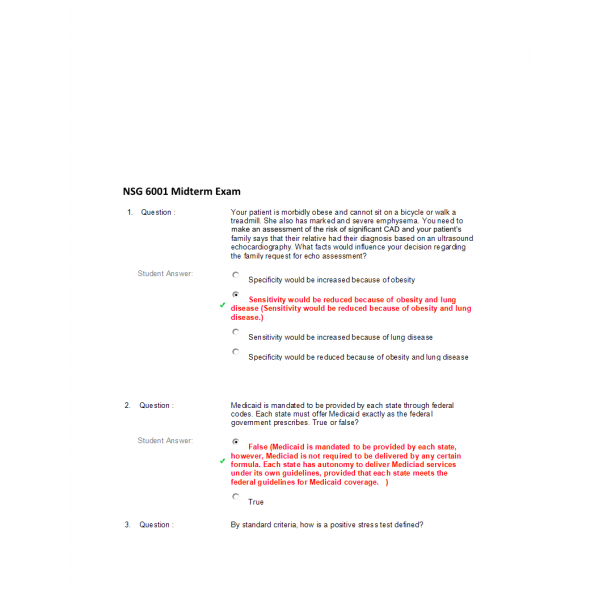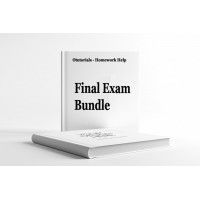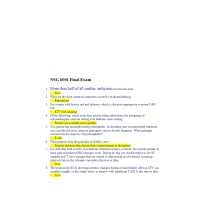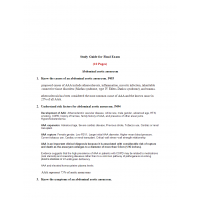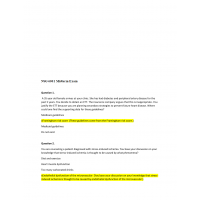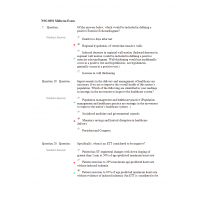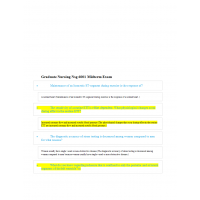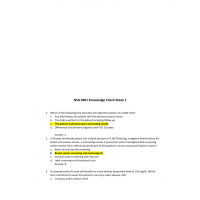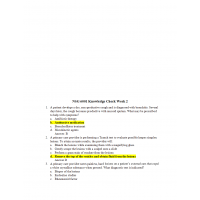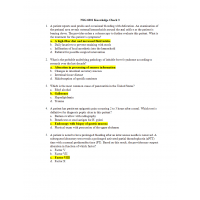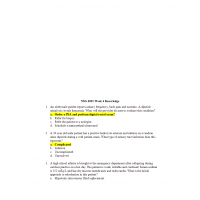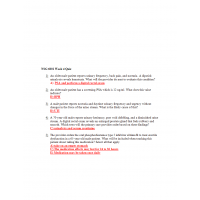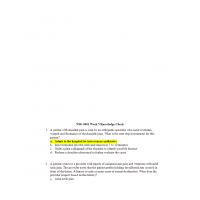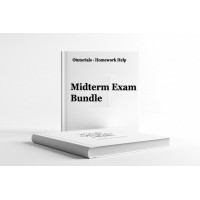NSG 6001 Midterm Exam 1
NSG 6001 Midterm Exam
1. Your patient is morbidly obese and cannot sit on a bicycle or walk a treadmill. She also has marked and severe emphysema. You need to make an assessment of the risk of significant CAD and your patient’s family says that their relative had their diagnosis based on an ultrasound echocardiography. What facts would influence your decision regarding the family request for echo assessment?
2.Medicaid is mandated to be provided by each state through federal codes. Each state must offer Medicaid exactly as the federal government prescribes. True or false?
3.By standard criteria, how is a positive stress test defined?
4.Population disease management is a term used to describe:
5.What are two of the most common forms of Exercise Stress Tests used today?
6.You are counseling a patient diagnosed with stress-induced ischemia. You base your discussion on your knowledge that stress-induced ischemia is thought to be caused by what phenomena?
7. Narrowed coronary arteries or plague rupture within the arteries of the coronary system may directly cause which condition?
8. Of the following, which is the best answer when asked for an advantage of echocardiogram exercise testing over thallium stress testing?
9.A 55-year old man is referred to your clinic. He has been sedentary all of his life, is gaining weight and wishes to get into better physical shape. He has never had any chest pain or shortness of breath when walking or climbing a flight of stairs. Before recommending a vigorous exercise routine for this patient, you order what test?
10.What ECG changes can reduce the specificity of the ETT?
11.In women, you need to know the limitations of certain tests for CAD. For example, single-photon emissions CT imaging, while an acceptable test for most men and some women, is technically limited in women for two reasons. From the following, choose the best possible answer.
12.Improvements in the delivery and management of healthcare are necessary if we are to improve the overall health of this nation’s population. Which of the following are identified in your readings as strategic in the movement to improve the healthcare system?
13.The sensitivity of a routine ETT is effort dependent. What physiological changes occur during effort in the routine ETT?
14.Your mentor says that you should be prepared to know how to determine the maximum heart rate for your patient during the ETT. How is the age-predicted maximum heart rate during an ETT determined?
15.Medicare hospital insurance (Part A) is funded through what system?
16.We all know that collaboration is integral to becoming a successful nurse practitioner. Among collaborations, however, only one can be considered as the most important. While each example below is important, which is the most important collaboration? The one that occurs:
17.The leads on the ECG showing ischemic changes during or immediately after an ETT can correlate roughly to the culprit artery or arteries with significant CAD. Is this true or false?
18.Ischemic changes on ECG during ETT is highly predictive of CAD. What is another important strong predictor of CAD that you might see during an ETT?
19.In CAD, after both systolic and diastolic dysfunction have occurred, the typical pattern of chest pain and related EKG changes occur. During an EKG, you should expect to see ST-segment and T-wave changes that are central to demonstration of ischemia occurring relatively late in the ischemic cascade. Is this true or false?
20.Chronic, non-communicable diseases account for disproportionate costs to the healthcare system. According to the World Health Organization, what percent of preventable deaths and disabilities occur in the Americas related to chronic non-communicable diseases?
21.Your patient has a maximum age-predicted heart rate of 180. During the exercise, he reaches a heart rate of 140 and then states he can no longer exercise. You see no evidence of ischemia on the ECG. This would be diagnostic for what condition?
22.What happens to coronary flow related to CAD?
23.Your patient cannot sit on a bicycle and has difficulties walking a treadmill with limited capacity for exercising. Still, you know that the ETT is the preferred test for CAD. You consider adding a pharmacological agent to get to maximum heart rate. What agent would be the most commonly used agent to assist in an ETT?
24.A 47-year old female with general complaints of fatigue and shortness of breath shows up in your clinic as a referral from another nurse practitioner. Several blood tests and chest x-rays have been completed without any diagnosis or outstanding abnormalities. You decide to order an ETT despite the fact that the recent ECG does not show any abnormalities. From the answers below, which would be the best answer to support your decision?
25.Why would inability to exercise reduce the specificity of the routine ETT?
26.On the echocardiography during the ETT you notice the following change: abnormal left ventricular ejection fraction. What do these changes suggest related to this patient?
27.Specifically, when is an ETT considered to be negative?
28.Eligibility for Medicaid includes the following:
29.What is the leading cause of death for women in the United States?
30.What do you know regarding ischemia that is confined to only the posterior and or lateral segments of the left ventricle?
| Institution & Term/Date | |
| Term/Date | South University |
-
$25.00

